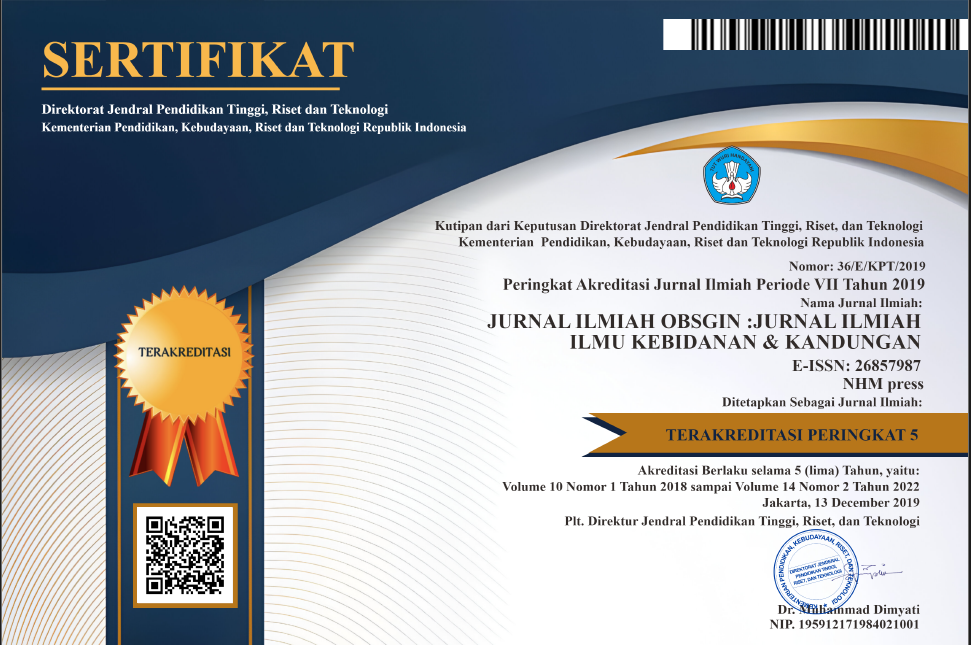LINGKUNGAN BIOLOGI, PERILAKU DAN STATUS GIZI DENGAN KEJADIAN MALARIA DI WILAYAH KERJA PUSKESMAS HAMADI
Abstract
According to the 2020 Annual Parasite Incidence (API) report, the death rate caused by malaria in Indonesia is 1.3% in a ratio of 0.93/1000 population. From these figures, the 2020 API report shows that Papua Province has a malaria death rate of 181.85/1000 population, Jayapura City 57.29/1000, and Hamadi Health Center 315/1000. The purpose of this study was to determine the relationship between the biological environment, community behavior, nutritional status and the incidence of malaria. This study applies analytical observational techniques with case control. There were 102 respondents, consisting of 51 groups of malaria cases and 51 control groups. The sampling technique used is simple random sampling. Statistical test using Chi-square and Logistic Regression. The results of the analysis showed that there were puddles of water, the presence of bushes, the presence of larvae, the use of mosquito repellent, the behavior of being outside the house at night, the behavior of opening the door of the house at night, nutritional status, the behavior of wearing long clothes (p = 0.001- 0.042) correlated with the incidence of malaria. The variables that become risk factors for malaria are activities outside the home and nutritional status (OR = 5,839; 22,413) based on the results of multivariate analysis. Recommendation: Suggestions to reduce the risk of malaria is to change behavior outside the house at night and improve nutritional status.
References
DinKes Kota Jayapura (2020) Profil Kesehatan Kota Jayapura Tahun 2019. Kota Jayapura: Dinkes Kota Jayapura.
DinKes Provinsi Papua (2019) Laporan Tahun Bidang P2MPL. Jayapura: Seksi Pencegahan Penyakit.
Ernawati, K., Soesilo, B. and Duarsa, A. (2011) ‘Hubungan Faktor Individu Dan Lingkungan Rumah Dengan Malaria Di Punduh Pedada Kabupaten Pesawaran Provinsi Lampung Indonesia 2010’, Makara Kesehatan, 15(2), pp. 51–57.
Imbiri, J. K. (2012) ANALISIS FAKTOR RISIKO MALARIA DI WILAYAH KERJA PUSKESMAS SARMI KOTA KABUPATEN SARMI TAHUN 2012. Universitas Diponegoro.
Kemenkes RI (2019) Laporan Kasus Malaria di Indonesia Tahun 2019. Dirjen Pen. Jakarta.
Mofu, R. M. (2015) ‘Hubungan Lingkungan Fisik, Kimia dan Biologi dengan Kepadatan vektor Anopheles di Wilayah Kerja Puskesmas Hamadi Kota Jayapura’, Jurnal Kesehatan Lingkungan Indonesia, 12(2), pp. 120–126. Available at: https://ejournal.undip.ac.id/index.php/jkli/article/view/8546.
Nababan, R. and Sitti, & Umniyati, R. (2018) ‘Faktor lingkungan dan malaria yang memengaruhi kasus malaria di daerah endemis tertinggi di Jawa Tengah.’, Berita Kedokteran Masyarakat; (BKM Journal of Community Medicine and Public Health), 34(1), pp. 11–18.
Nofianti, T. (2014) ‘Kejadian Malaria dan Status Gizi Balita di Kabupaten Manokwari Provinsi Papua Barat (The Incidence of Malaria and Nutrition Status of Children in Manokwari District of West Papua Province)’, Jurnal Gizi Klinik Indonesia, 10(04), pp. 180–190. Available at: https://core.ac.uk/download/pdf/296266201.pdf.
SAMARAN, E. (2016) HUBUNGAN STATUS GIZI DAN PERILAKU MASYARAKAT DENGAN KEJADIAN MALARIA DI WILAYAH KERJA PUSKESMAS KLASAMAN KOTA SORONG. Poltekkes Kemenkes Sorong.
Saputro, G., Hadi, U. K. and Koesharto, F. (2010) ‘Perilaku Nyamuk Anopheles punctulatus dan Kaitannya dengan Epidemiologi Malaria di Desa Dulanpokpok, Kabupaten Fakfak, Papua Barat’, Hemera ZOa, pp. 25–33.
Sunarsih, E. (2015) ‘Faktor Risiko Lingkungan dan Perilaku Yang Berkaitan Dengan Kejadian Malaria di Pangkalbalam Pangkalpinang’, Jurnal Kesehatan Lingkungan Indonesia, 8(1), pp. 1-9–9.
Wau, F. G., Ndoen, H. I. and Landi, S. (2019) ‘Praktek Pencegahan Penularan Malaria pada Balita di Puskesmas Kabukarudi Sumba Barat’, Lontar : Journal of Community Health, 1(1), pp. 23–29. doi: 10.35508/ljch.v1i1.2154.
WHO (2020) World Malaria Report. Available at: https://www.who.int/news-room/fact-sheets/detail/malaria.











